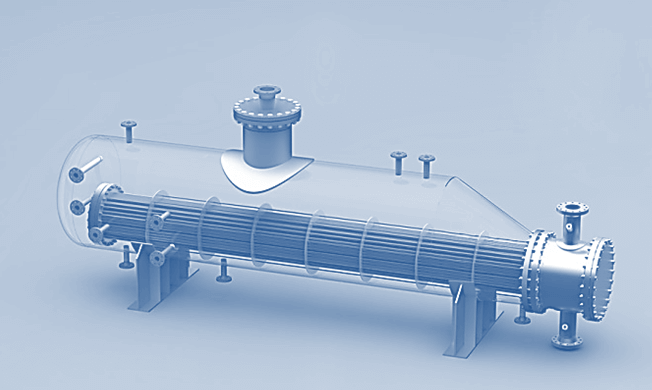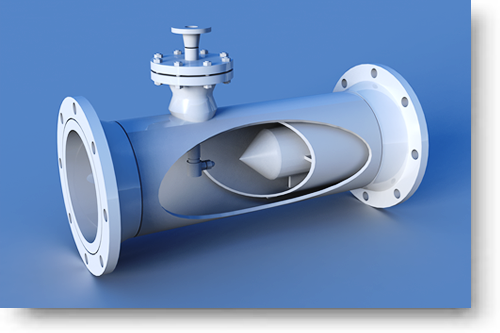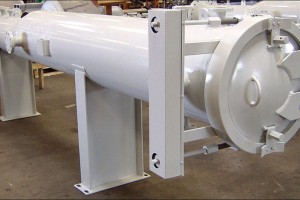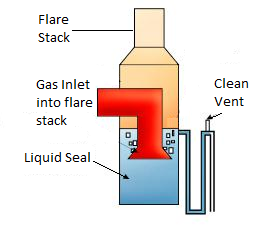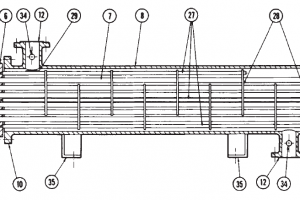According to TEMA standards, a kettle reboiler is a TEMA K type of shell and tube heat exchanger. Kettle reboilers are particularly useful for phase change heat transfer applications such as boiling of liquid and converting it to vapour. The design and configuration of kettle reboilers make them well suited for these types of applications, as they can effectively transfer heat to the liquid, causing it to boil and convert into a vapour.
Table of content:
Kettle Type Reboiler Working Principle
Types of Kettle Reboilers
Design of Kettle Reboilers
Kettle Type Reboiler Applications
Kettle Type Reboiler Working Principle
These exchangers have a similar structure as shell and tube heat exchangers. The major difference between the two is that the outer shell is shaped like a kettle or boiling pan. The tube bundle is contained within the shell. A kettle reboiler works by transferring heat from one fluid to another through a set of tubes.
This type of reboiler holds the liquid in its shell at the bottom. There the liquid comes into contact with a tube bundle containing the heating medium. The heating medium which may be steam flows through tube bundles and exits as condensate. The liquid from the bottom of the tower to be heated flows through the shell side.
The latent heat of the heating medium(steam) is utilized to vaporize the shell side liquid. The K shell design provides enough space to separate vaporized liquid and vapor. The vaporized liquid flows out through the top of the shell.
There is a retaining wall or overflow weir. It dictates the quantity of liquid that will be retained in the shell so that the tube bundle is kept covered with liquid. The vertical length of the weir. The tube bundle must be immersed inside the liquid at all times during the process for the maximum efficiency of an exchanger.
Types of Kettle Type Reboilers
Kettle type heat exchangers can be classified into the following types based on the design of the tubes.
- Fixed tube sheet exchanger: These exchangers have tubes that are fixed in place between two tube sheets.
- U-tube exchanger: This type of exchanger have tubes that are bent and then connected at both ends to the tube sheets.
Design of Kettle Reboilers
The steps in the design of kettle type reboilers are as follows:
- Make energy balance and determine the heat duty, using energy balance calculation.
- Determine fluid properties for both fluids.
- Calculation of heat transfer coefficient: The calculation of the heat transfer coefficient of the hot fluid can be performed similarly as in the case of the design of shell and tube heat exchangers for a single phase. The Kern method is used to calculate the individual heat transfer coefficient of the boiling liquid by trial and error procedure.
- Decide the type of exchanger i.e. fixed tube sheet or U- shell (use U-tube reboiler for large temperature difference), tube size (diameter, length, tube pitch), layout, and effective tube length.
- Calculate the heat exchanger area.
- Calculate the heat flux: This value should be less than the maximum heat flux.
- If this criterion is not satisfied, go to step 5 and revise the calculation.
- Pressure drop calculation: There will be negligible hydrostatic head for the flow of liquid from the column to reboilers (low circulation velocity) if the liquid level above the tube bundle is not too high. Therefore, the shell side pressure drop may be considered negligible. Pressure drop calculation can be done for tube side pressure drop calculation. Check these calculators for pressure drop calculations.
- Go for mechanical design after completing this procedure.
Click here to check the detailed post on shell and tube heat exchanger equations and design procedure.
Kettle Type Reboiler Applications
Kettle type reboilers are commonly used in several industrial applications, including:
- Distillation column reboiling - to maintain the desired temperature and control the boil-up rate in distillation columns.
- Absorption and stripping columns - to heat the solution and maintain the desired temperature to increase the vaporization rate of the volatile components.
- As a source of heating in heat exchanger systems to maintain the temperature in chemical reactors, storage tanks, and pipelines.
- Natural gas processing - for the reboiling of natural gas liquids to separate impurities and purify the gas.
- Refineries - for the heating and vaporization of liquids in the refining process of crude oil.
Advantages
- Low circulation rates, horizontal configuration, and all vapour return flow make kettle type reboilers relatively insensitive to system hydraulics. As a result, they tend to be reliable even at very low (vacuum) or high (near critical) pressures.
- Kettle type reboilers can operate efficiently with small temperature driving forces, as high heat fluxes can be obtained by increasing the tube pitch.
Disadvantages
- Oversized TEMA K-shell is relatively expensive.
- Low circulation rates make kettles very susceptible to fouling. So cannot be used for fouling fluids.
- These exchangers have low heat transfer rates due to no liquid circulation inside the shell.
- Kettle reboilers are not suitable for heat-sensitive fluids, as it has high residence time.
